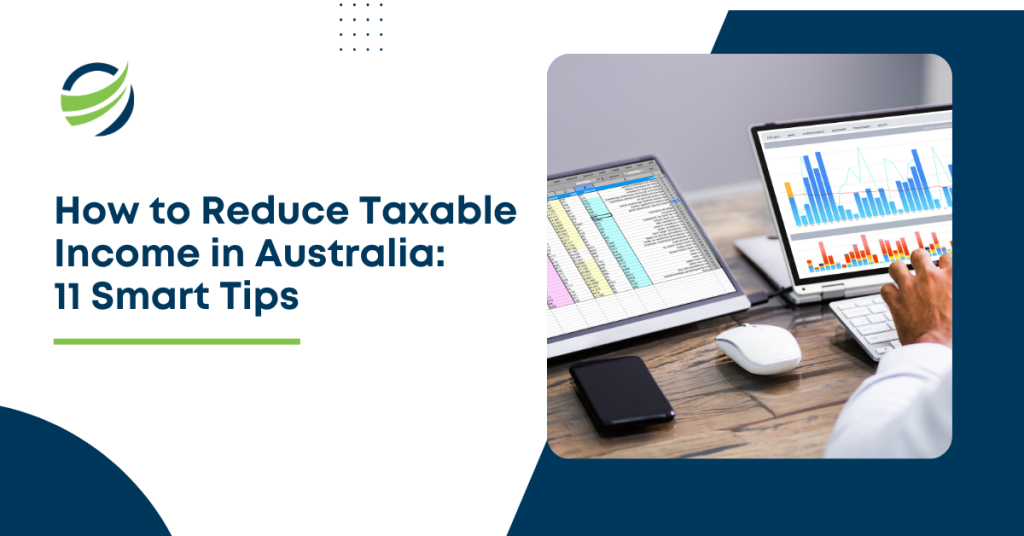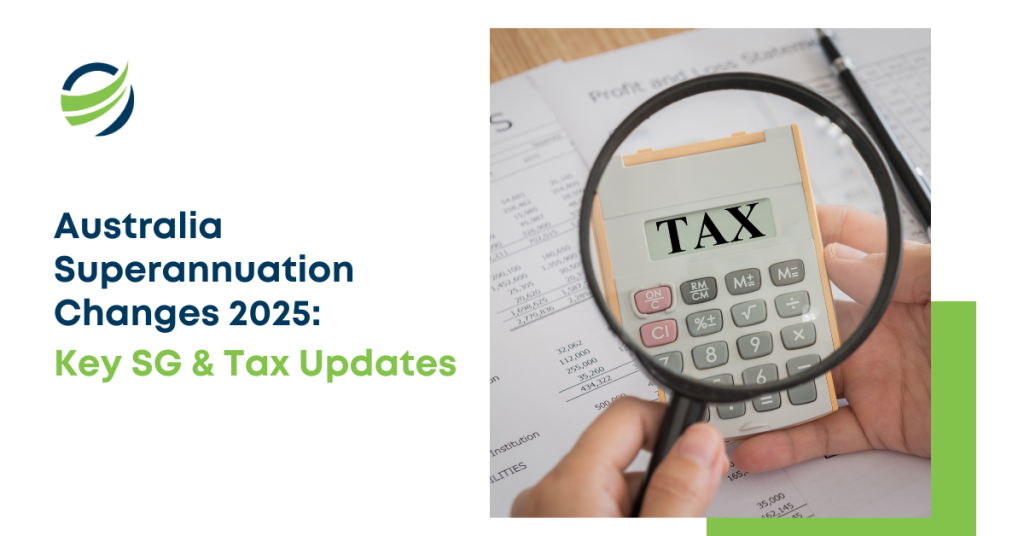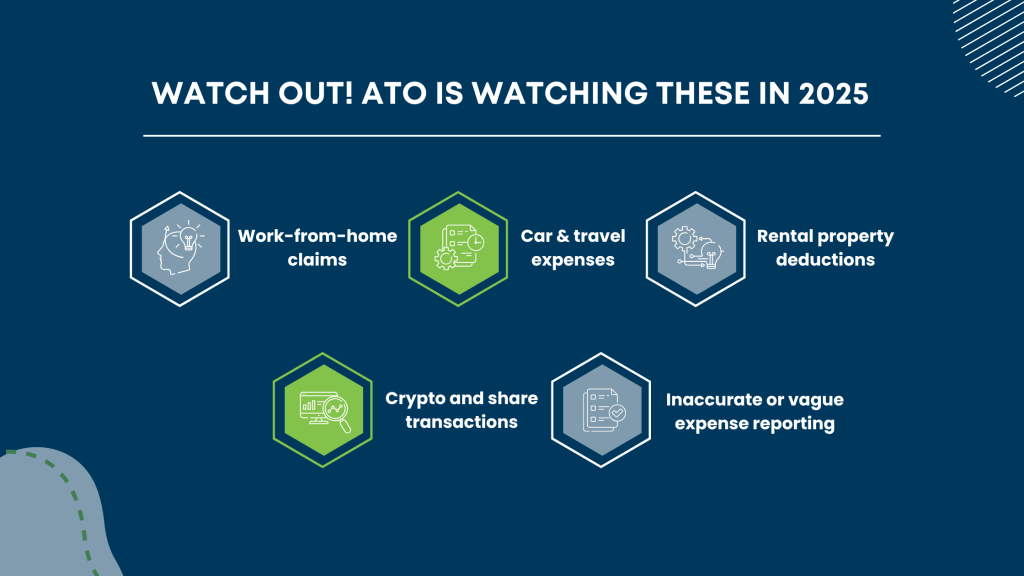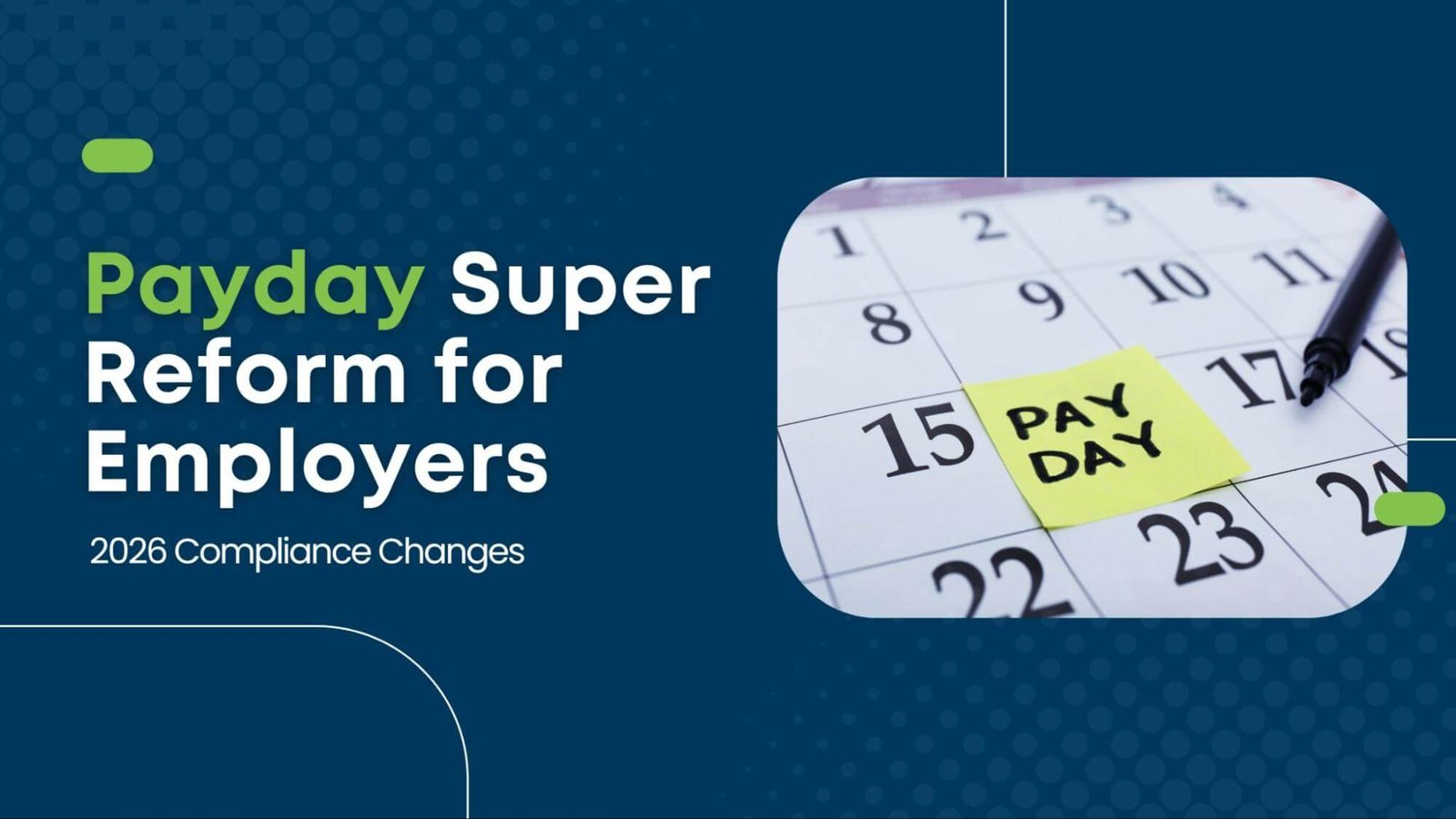
How to Reduce Taxable Income in Australia: 11 Smart Tips
- Aesha Shah
- July 2, 2025
- 6 minutes
Paying tax is part of life in Australia, but that doesn’t mean you can’t take smart steps to minimise your tax burden. With the right planning and understanding of deductions, offsets, and strategic spending, you can legally reduce how much tax you owe, whether you’re an employee, sole trader, or small business owner. Many Australians are also turning to outsourced financial services to stay compliant while improving their year-end outcomes.
If you’re searching for how to reduce taxable income in Australia, you’re in the right place. This guide breaks down 11 smart tips to help you take control of your finances and keep more of your hard-earned income in 2025.
Understanding Taxable Income in Australia
Before diving into tactics, it’s important to understand what taxable income actually means. Your taxable income is the amount left after subtracting allowable deductions from your total assessable income. That includes things like salaries, investment income, rental income, business profits, and more.
Tax is calculated on this final amount, so reducing it with legitimate deductions or offsets is the foundation of any smart income tax reduction strategies.
1. Maximise Superannuation Contributions
One of the most effective tax minimisation strategies Australia has to offer is contributing more to your super fund. Making additional concessional (before-tax) contributions, also known as salary sacrificing, can reduce your taxable income.
For FY2025, the concessional contribution cap is $30,000. These contributions are taxed at just 15%, which is likely to be lower than your marginal tax rate. If you manage your super through an accountant or firm offering outsourced super solutions, make sure they’re optimising your concessional contributions. It’s one of the most straightforward ways to reduce your taxable income while boosting retirement savings.
2. Claim All Eligible Work-Related Deductions
Many people miss out on deductions simply because they don’t realise what they can claim. Depending on your job, you may be able to deduct:
- Work-related travel
- Home office expenses
- Tools and equipment
- Union fees and memberships
- Training and education directly related to your work
Proper documentation is key. Keep receipts and records in case the ATO asks questions.
The ATO has flagged work-related expense claims, especially home office deductions and clothing, as a key area of scrutiny in 2025. According to News.com.au, millions of Australians could be audited if their claims appear inflated or unsubstantiated. So, always make sure your claims are backed by records and are directly related to your income.
3. Leverage Instant Asset Write-Offs (For Small Businesses)
If you’re running a small business or are a sole trader, investing in assets like laptops, office furniture, or equipment can work in your favour.
As part of its ongoing stimulus efforts, the government may continue to allow instant asset write-offs in 2025. This means you can claim a full deduction for the cost of an asset in the same year you purchase it, effectively reducing your taxable income for that year.
4. Prepay Deductible Expenses
A classic but often underused strategy to reduce my taxable income Australia is prepaying expenses. This works especially well for small business owners and sole traders.
For example, if you prepay 12 months’ worth of insurance, subscriptions, or rent before June 30, you can claim the full deduction in the current tax year, even if the service runs into the next financial year.
As noted by The Australian, tax experts recommend acting before June 30 to prepay eligible expenses and accelerate deductions. Strategies like this can provide real savings in 2025, especially for those who operate as sole traders or run small businesses. Timing is everything when it comes to income tax reduction strategies.
5. Use Negative Gearing (For Property Investors)
If your investment property costs more to hold than it earns, the resulting loss can be deducted from your other income. This is known as negative gearing.
While it comes with its risks, it remains one of the legitimate ways to reduce taxable income in Australia, especially when combined with capital growth over time. Just ensure the property is genuinely income-producing and the expenses are well-documented.

6. Offset Capital Gains with Capital Losses
Sold shares or crypto assets at a profit in 2025?
That gain is taxable. But if you’ve also had losses, maybe from underperforming investments, you can use them to offset those gains.
This technique is called capital loss harvesting. It’s a savvy move that can bring your taxable income down and is fully compliant with ATO rules.
7. Make Charitable Donations
If you’ve donated to registered charities (Deductible Gift Recipients), those contributions can be deducted from your taxable income.
Keep a record of your donation receipts. Only gifts over $2 are claimable, and they must be voluntary with no material benefit received in return.
8. Maintain a Logbook for Car Expenses
If you use your car for work-related purposes, you may be entitled to claim a portion of the expenses.
There are two main methods: the cents-per-kilometre method or the logbook method. The logbook method usually gives a higher deduction but requires you to maintain a log for 12 weeks.
9. Claim Depreciation on Assets
If you’re a property investor or a business owner, you can claim depreciation on eligible assets, like appliances, tools, and even parts of a rental property.
For property investors, this includes capital works and plant & equipment. For businesses, it covers everything from office furniture to machinery. Depreciation claims can be complex, so it may be worth getting a depreciation schedule prepared by a qualified quantity surveyor.
10. Consider Income Splitting Where Applicable
Income splitting is a legal method of reducing tax by distributing income to a lower-income-earning family member, where possible.
For instance, business owners may distribute profits through a family trust or partnership. However, strict ATO guidelines apply, and professional advice is highly recommended.
11. Review Your Tax Strategy Annually
Perhaps the most important of all income tax reduction strategies is consistency. Tax laws evolve, thresholds change, and what worked last year may not work this year.
By reviewing your tax plan every year, preferably with a qualified tax agent, you can stay on top of new deductions and avoid costly mistakes.
2025 Tax Cut Update: The Stage 3 tax cuts, effective from July 1, 2024, have lowered tax rates for millions of Australians. For example, the 32.5% rate was cut to 30%, and the 19% bracket dropped to 16%. You can review the full breakdown in this Treasury fact sheet. These changes may impact your planning, especially if you’re considering salary sacrificing or reviewing your income brackets.
Common Mistakes to Avoid
- Claiming ineligible expenses
- Forgetting to report income from investments or crypto
- Not keeping receipts
- Relying solely on generic advice

Final Thoughts
Figuring out how to reduce taxable income in Australia isn’t about gaming the system, it’s about understanding the rules and using them wisely. The goal isn’t to avoid tax, but to only pay what you truly owe.
By implementing the tax minimisation strategies Australia taxpayers have access to, like maximising super contributions, leveraging deductions, and planning ahead, you can significantly improve your year-end position.
In 2025, as the cost of living continues to rise, every dollar saved counts. Whether you’re looking for ways to reduce taxable income as an employee or hoping to reduce my taxable income Australia as a business owner, these tips can help you get there.
If you find yourself unsure about which deductions apply to your situation, working with an outsourced taxation expert can provide clarity without the overhead costs of a full-time adviser. They can help you apply the right tax minimisation strategies Australia allows, legally and effectively.








